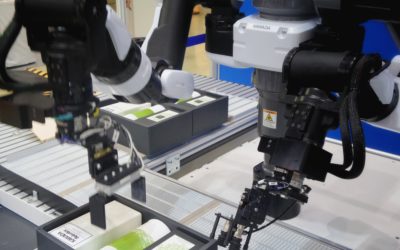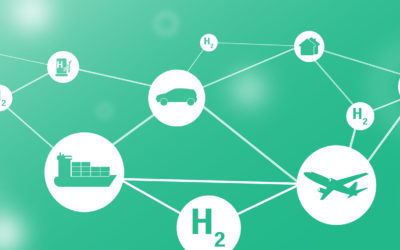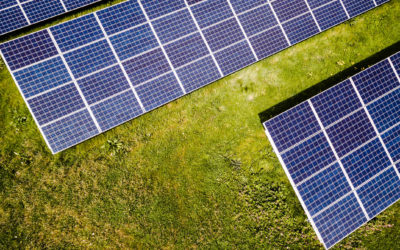CDTI CERVERA TECHNOLOGY CENTRES
r&d programmes

R&D PROGRAMMES
CDTI CERVERA Technology Centres
Description
Aid for the implementation of strategic cooperation research, development and innovation programmes, developed by Technological Centres and Innovation Support Centres at the national level, in one of the Cervera priority technologies.
The centres receiving the aid will receive accreditation as “Cervera Centre of Excellence” in the corresponding technology for which the aid has been received. These accreditations will be in force during the period of execution of the aid, without an eventual extension of the period of execution of the subsidized activity implying in turn the extension of the validity period of the accreditations. The accreditation will be the exclusive property of each member of the group.
The centres that lead the “Cervera Net” must stand out both for the quality of their scientific-technical research activities and for the strength and the impact of their collaborations with the productive fabric, which gives them the character of technological and innovation partners strategic, and with an outstanding impact on business investment in R + D + i. The “Cervera Net” will represent a platform for the exchange of experiences and collaboration, optimization of resources, dissemination of results and promotion of the activities carried out. The essential characteristic of this typology of projects is that they necessarily have to be developed in a limited group of technological areas (priority technologies Cervera).
The following expenses are eligible: personnel expenses, instrument and material costs, costs of contractual research, technical knowledge and patents acquired, consulting and equivalent services (excluding those associated with the processing and management of the project), supplementary general expenses and other expenses derived from the project. The expense derived from the auditor’s report is also eligible.
All expenses financed must be allocated exclusively or derive directly from the supported R&D activity.
CERVERA PRIORITY TECHNOLOGIES
- Advanced materials
- Eco-Innovation
- Energy transition
- Smart manufacturing
- Technologies for health
- Safe and healthy food chain
- Deep learning and Artificial Intelligence
- Advanced mobile networks
- Smart transportation
- Protection of information
CARTIF participation
CDTI starts the Cervera transfer R&D program in January 2019. Since its publication, the Centre has actively participated in advising companies on the advantages that this program provides them with respect to other existing aid to support R&D. The priority lines in which the Centre has the capacity to transfer knowledge are:
CARTIF has the capacity to transfer knowledge in the Cervera priority technology on the development of new materials and physical and / or chemical processes using the micro and nano scale to provide surfaces with specific properties, from the area of biotechnology and circular economy.
CARTIF has the capacity to transfer knowledge in the following Cervera Eco-innovation priority technologies:
- Elimination or substitution of harmful components in the formulation of products.
- Development of processes with greater efficiency and reduction of the use of raw materials.
- Economically viable recycling and recovery systems for waste, mainly for composite materials, complex plastic materials, electronic waste, etc.
- In situ soil recovery technologies, designed to isolate or destroy polluting substances.
- High efficiency technologies and tools for water treatment that allow the increase of water resources.
The technical areas involved are: Circular Economy, Natural Resources and Biotechnology.
CARTIF has extensive experience within the Cervera priority technology on Development of hybrid energy generation and storage systems with the exclusive use of renewable technologies, applicable to products, infrastructures or buildings. It includes those developments of energy systems applicable at various scales, from small products (EoT) to large infrastructures, through exclusively renewable energy generation, storage and efficiency solutions. The areas involved are Energy Policy and Renewable Energies.
CARTIF has knowledge generated to transfer in relation to the three thematic priorities related to smart manufacturing. The areas involved are Industry 4.0 and Industrial Solutions.
CARTIF has a variety of experience, especially at the national level, in the Cervera thematic priority on personalization of medical devices, implants and prostheses, with solutions adapted to each patient, based on three-dimensional printing and bio-printing technologies. Regenerative medicine or cell therapy will constitute the knowledge bases to generate both tissues and organs in vitro that allow the creation of bioimplants for the treatment of injuries or pathologies. The technical area involved is Health and Quality of Life.
CARTIF has extensive experience, especially in projects financed by the CDTI, within the framework of the Cervera priority technology on the development of ingredients and functional foods through the application of omic technologies. These technologies allow, through the use of high-performance tools for massive data analysis in the context of food science, to improve human nutrition and its consequences for health. Thus, transcriptomics, proteomics and metabolomics are considered as techniques that allow us to analyse how food affects the prevention or evolution of diseases. The technical area involved is Food.
The Centre has the capacity to develop projects within the framework of the two priority technologies of Deep Learning and Artificial Intelligence through the areas of Smart Grids, Industry 4.0 and Industrial Solutions.
CARTIF has the capacity to develop projects in the field of priority technology for Smart Grid Development (VANET) that include vehicles as network nodes and that respond to the challenge of increasing autonomous and self-guided vehicles, as well as communication and interaction with the rest of infrastructures in the field of smart cities, mainly through the Smart Cities area.
Although the centre uses cybersecurity tools within its own developments, it has not generated knowledge in cybersecurity technology that can be transferred.
Program summary sheet
Summary file in PDF format::
DownloadThematic blocks:
Advanced materials
Short description:
Obtaining new materials with higher physical-chemical properties than existing ones or with less environmental impact, specifically technologies that allow:
Obtaining nano or micromaterials (graphene, metal oxides, cellulose, among others) that, added to different substrates, change their chemical-physical and working behavior. As well as nano and microencapsulation processes.
Development of new materials (metallic, ceramic, cermets, dlc, etc.) and physical and / or chemical processes using the micro and nano scale to provide surfaces with specific properties (hardness, lubrication, chemical resistance, aesthetics, easy cleaning, etc.).
Eco-Innovation
Short description:
Technologies that allow a reduction in the consumption of raw materials and natural resources, more efficient chemical processes, the reuse of waste and the recovery of soils or the reduction of environmental impact. Specifically, the priority technologies are:
- Elimination or substitution of harmful components in the formulation of products, development of processes with greater efficiency and reduction of the use of raw materials.
- Development of materials from alternative sources to petroleum, with a lower environmental impact, more easily recyclable or biodegradable.
- Economically viable recycling and recovery systems for waste, mainly for composite materials, complex plastic materials, electronic waste, etc.
- In situ soil reclamation technologies, designed to isolate or destroy pollutants.
- High efficiency technologies and tools for water treatment that allow the increase of water resources.
Energy transition
Short description:
Development and application of renewable energies to facilitate the energy transition of the Spanish economy, specifically:
- Development of hybrid energy generation and storage systems with exclusive use of renewable technologies, applicable to products, infrastructures or buildings. It includes those developments of energy systems applicable at various scales, from small products (EoT) to large infrastructures, through exclusively renewable energy generation, storage and efficiency solutions.
- Development and optimization of components and energy storage systems (electrodes, electrolytes, catalysts, membranes, etc.) for batteries in their different types, uses and powers.
- Development of new H2 production, storage and distribution technologies.
Smart manufacturing
Short description:
Development of technologies related to the implementation of smart manufacturing and Industry 4.0, the result of the convergence of ICT, sensorisation and robotics, specifically:
- Development of flexible automated manufacturing processes (multi-operational) for the processing of parts with multi-material (multi-functionality), with embedded sensorisation.
- Development of virtual and augmented reality systems that allow advanced Human-Machine interfaces. It also includes advanced collaborative environments between people and robots, with advanced modeling, simulation and programming of collaborative scenarios, and development of sensory systems to guarantee operational safety, as well as mobile robotics.
- Additive manufacturing, including the development of specific equipment, processes and materials for their implementation as an industrial-scale production process of marketable parts, as an alternative to other conventional processes (machining, deformation, injection, etc.).
Technologies for health
Short description:
Personalized or precision medicine opens up new opportunities for the diagnosis and treatment of diseases, as well as for the development of more effective and personalized medicines. Precision medicine is understood as that capable of adapting medical practice to the individual characteristics of each person.
- Personalized or precision medicine that develops new chemical and biological entities, health products and technologies that allow the prevention, diagnosis, prognosis and treatment of diseases, including advanced therapies such as immunotherapy or gene therapy.
- Bioelectronics and biomechanics for the development of biocompatible products and components, sensory systems for the analysis and measurement of biomedical and biomechanical parameters, mechatronic actuation systems, particularly miniaturized, for their application in biomedical robotics, especially applied to the rehabilitation of patients.
- Personalization of medical devices, implants and prostheses, with solutions adapted to each patient, based on three-dimensional printing and bioprinting technologies. Regenerative medicine or cell therapy will constitute the knowledge bases to generate both tissues and organs in vitro that allow the creation of bioimplants for the treatment of injuries or pathologies.
Safe and healthy food chain
Short description:
Achieving a safe and healthy diet requires a comprehensive treatment of the food chain. It is necessary to optimize the treatments for the control of pests and livestock diseases that can generate negative side effects on human health, improve the safety and shelf life of food, while deepening the research and development of foods with nutraceutical properties and beneficial effects for disease prevention.
- Control of infectious diseases in livestock and aquaculture production: the development of compounds with prophylactic and / or therapeutic activity useful in the control –prevention, diagnosis and treatment- of diseases of bacterial, viral or fungal origin that affect farm animals for human consumption.
- Control of pests in crops of agronomic interest: the development of compounds with phytosanitary, biostimulant, microbiocidal and fungicidal activity is promoted for the prevention and treatment of pests generated both by bacteria and by viruses and fungi that affect crops of commercial interest.
- Development of ingredients and foods of a functional nature through the application of omic technologies. These technologies allow, through the use of high-performance tools for massive data analysis in the context of food science, to improve human nutrition and its consequences for health. Thus, transcriptomics, proteomics and metabolomics are considered as techniques that allow us to analyse how food affects the prevention or evolution of diseases.
Deep learning and Artificial Intelligence
Short description:
Development and improvement of technologies that imitate the mechanics of the human brain in the treatment of data of heterogeneous origin through algorithms and aimed at facilitating the resolution of various problems. Specifically:
- Technologies for machine learning, Big Data and Data Science, Blockchain, neural networks or artificial intelligence for the massive handling of data of heterogeneous origin, in order to value the large volumes of information from different environments, and facilitate its exploitation as structured information in an innovative business model driven by data or “data-powered”.
- The development of knowledge and technologies that help fill the gaps that may exist between the needs of end users and the possible existing enabling technologies. In a specific and non-exclusive way, technological fields such as virtual and augmented reality, computer vision, automatic speech recognition, recognition of audio signals and mobility applications, industry (modeling systems, simulation and prediction of machine behavior and manufacturing processes, with the development of virtual twins that allow their design and subsequent optimization).
Advanced mobile networks
Short description:
The field of advanced mobile communications contemplate the promotion of the development of the supporting technologies of these future networks, as well as the use of them in the development of novel applications and in the resolution of existing and unapproachable problems with the current ones. Specifically:
- Advanced mobile technologies according to the 5G standard and 6G future prospects: development of the entire chain of elements necessary to guarantee the services of the network, such as, for example, communications protocols, sensors for associated networks, stations base, or radiant systems. Since the start of 5G network services in 2020, new strategies, trends and applications will emerge, which will need to be closely followed, while the foresight of what will be the 6G standard is carried out.
- Integration of artificial intelligence in future mobile networks: solutions based on Machine Learning (ML) for problems ranging from radio access technology (RAT) selection to malware detection. As a basic ML technique, deep learning (DL) embedding is proposed in 5G mobile or wireless networks. Machine learning techniques can be categorized into three classes: supervised learning, unsupervised learning and reinforcement learning, either on neural networks, encoders or even as deep reinforcement learning environments.
Smart transportation
Short description:
The traditional concept of transport evolves towards the most innovative mobility in which information systems constitute the technological core of future mobility developments (autonomous and driverless mobility and integration in smart cities), as well as for new types of infrastructures that they support the new mobility systems:
- Development of digital instrumentation applicable to assisted driving to increase safety through anti-collision sensory systems, using intelligent actuation systems that increase active and passive safety. It also includes the development of communication systems for the connectivity of vehicles to the infrastructure prepared for autonomous driving.
- Development of smart grids (VANET) that include vehicles as network nodes and that respond to the challenge of increasing autonomous and self-guided vehicles, as well as communication and interaction with the rest of the infrastructures in the field of smart cities.
Protection and information
Short description:
Cybersecurity and information privacy technologies are essential for the development of a digital and interconnected economy, from the smart factory to autonomous vehicles, through critical infrastructures or air safety.
- Cybersecurity: development of robust information processing systems to reduce vulnerabilities in systems and networks, based on the application of data security technologies. Technologies that allow increasing the fight against “cybercrime” and protecting critical infrastructures, such as energy supply, etc.
- Information privacy technologies: the aim is to promote the development of technologies for secure identity verification and access management, cryptology and, in general terms, any other technology that increases the trust of information systems.
Although the Centre uses cybersecurity tools within its own developments, it has not generated knowledge in cybersecurity technology that can be transferred.
![]()
Responsible

Irene Hompanera Velasco
Programs Department
Related projects
5R
The 5R Network, Cervera network in Robotic technologies for intelligent manufacturing, has as its mission to establish a collaborative network, equipped with the necessary technology, tools and infrastructures to act as a driving force for the development and introduction of new robotic technologies in the industrial fabric.
H24NewAge
H24NewAge has as a main objective the development of advanced technologies and his industrial transformation to boost the positioning of the centers and spanish businees in the hydrogen value chain, and in partiuclar in the production, storage and distribution of hydrogen.
HySGRID+
The objective of the Cervera HySGRID+ network is to strengthen the technological capacity of Spanish Technology Centres with a high level of complementarity and promote their solid cooperation with the ultimate aim of researching and developing new technological solutions that facilitate the creation of local energy positive balance communities (LEPC)


